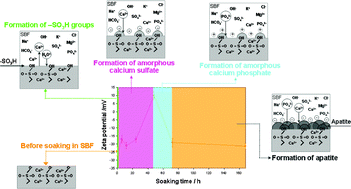*
Corresponding authors
a
3B's Research Group, Department of Polymer Engineering, University of Minho, Campus de Gualtar, 4710-057 Braga, Portugal
E-mail:
belinha@dep.uminho.pt
b
IBB – Institute for Biotechnology and Bioengineering, PT Government Associated Laboratory, Braga, Portugal
c
Department of Biomedical Sciences, College of Life and Health Sciences, Chubu University, 1200 Matsumoto Kasugai, Aichi 487-8501, Japan
d
Department of Ceramic Engineering, School of Advanced Materials Engineering, Yonsei University, 134 Shinchon-dong, Seodaemun-gu, Seoul 120-749, Korea
e
Ion Beam Engineering Experimental Laboratory, Graduate School of Engineering, Kyoto University, Nishikyo-ku, Kyoto 615-8510, Japan
f
Department of Orthopaedic Surgery, Faculty of Medicine, Kyoto University, Sakyo-ku, Kyoto 606-8506, Japan


 Please wait while we load your content...
Please wait while we load your content...